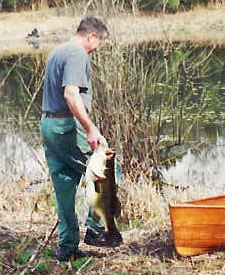Here’s a tip: decrease the bevel of your knife edge about 5 degrees and improve cutting performance about tenfold.
Today’s better, fancy knife steels are made to help you more. How do they do this? By letting you use a flatter edge and by letting that longer, thinner edge hold up as well as your old edges used to.
So if you have a newish knife and see that it has a final edge bevel about 1/16″-1/32″ wide—that’s a pretty blunt edge. If it’s sharpened it’ll be sharp. It can be razor sharp. And it’ll hold up as if it were a hatchet. It doesn’t have to. Grind it or just whetstone it out thinner, so the bevel is a far-prettier 1/8″-3/16″ and, man, you’ll have a slicin’, cuttin’ edge! Scary sharp!
…Oh, and here’s a link to everything you could want to know about knife steels, in plain English.
Knives with contemporary styling tend to have very thick blades. These particularly tend to end up with very obtuse, that is, blunt, edges. Not to say the edge isn’t sharp, it’s just a wedge shape instead of a feather-thin edge.
A modern steel can be many times stronger than an older-style steel. Old steel is jim-dandy. But if you have a new-era blade, let it help you out. Feather that edge on back and let that razor-blade quality cutting shine through—while still holding an edge as good as any older knife. You don’t want a knife that keeps an edge for a year. You want to sharpened it a few times a year—steel it some, too. Use it. Let it do its thing.
I just got a new Spyderco Endura. What a great yard and utility knife. I use it a half dozen times a day. It came out of the box with a VERY blunt, obtuse edge. It’s a thick blade, too. That edge had the profile of a cheese wedge. I ground it on back much thinner, then whetstoned it smooth and thin. Oh, man oh man, it’s sharp! It’ll lop anything now. It’s prettier, too, this way. A wide, thin edge is a nice thing. Now, it took 20 minutes of vigorous whetstoning (after grinding) to tidy it up, but it’s well worth it. The sharpness technically might be about the same but due to its much thinner profile it’s WAY more effectively sharp.
Heck, this is a good thing to do even on old carbon steel blades. The only thing you don’t want thin-edged is a chopping, truly rugged whacking type of blade. For the rest, let em cut.
Try it on one of your knives and see!
Oh, and if you don’t know how to sharpen a knife, get a whetstone and wet it (or oil it) and work an edge in a circular way, then do the other side until you bring up a burr on the off-side. Hold it steady at the same angle. : ) I find that this is pretty easy to do—I don’t need a guide-rod thingy, but you can use one of those. Then do the other side again til the burr comes up there. Then flip sides working every more lightly. Then hopefully you have a two-sided whetstone so you can flip it over and finish up your edge on the fine side. I like to cut *into* the stone on my final stroke for each side that knocks off the burr. In the end you shouldn’t feel a burr on either side. That should be a sharp knife.
https://www.zknives.com/knives/articles/knifesteelfaq.shtml



